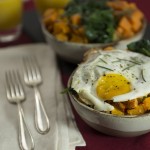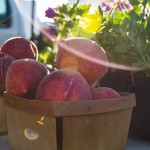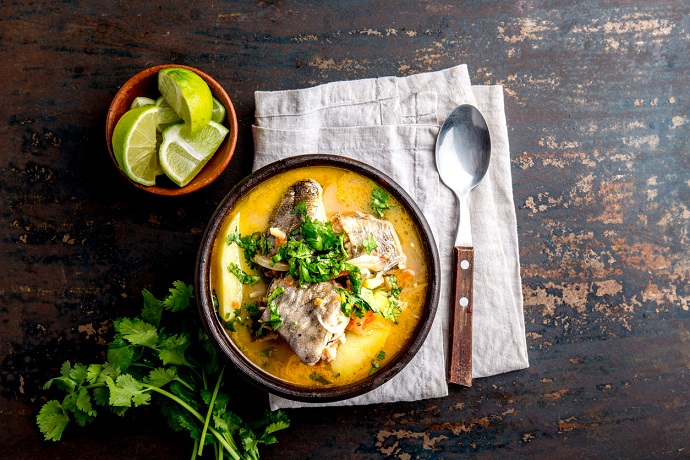Chile is known for its unique geography, running 2,640 miles in length but only about 100 miles wide. Its geographic extremes range from the Atacama Desert (the driest nonpolar desert on Earth), to the fertile Central Valley where about 85% of the population lives, to the south where heavy forests and volcanoes give way to the glaciers and lakes of Patagonia. However, with the exception of some regional specialties, a similar cuisine is enjoyed throughout the country.
Chilean food stems from a combination of Indigenous culture and local ingredients and traditional Spanish cuisine, as well as British, French, German, and Italian influences. With its diverse climate and vast coastline, Chile is home to a wide range of fruits, vegetables, and other agricultural products, and seafood and fish play an important role in the diet throughout the country.
The Diet and Popular Dishes
Chile Criolla, or Chilean Creole, is one of the country’s most prominent styles of cooking. It was born from the fusion of Spanish flavors and Indigenous cooking methods and ingredients. In the north, the Aymara and Atacama people herd llamas, alpaca, and sheep and grow potatoes, quinoa, and barley. In the south, the Mapuche people follow the tradition of cooking with potatoes, corn, and beans and also raise livestock and collect piñones, the seeds of the Chilean pine tree. When Spanish explorers arrived in the 1500s, they brought several foods with them, including grapes, citrus fruits, olives, nuts, sugar, garlic, milk, and cheese. All these ingredients are now staples in Chilean cuisine and found in many of the country’s most popular modern dishes.
Fruits and vegetables, widely available throughout the country thanks to its diverse geography and climate, play a large role in the Chilean diet. There’s also several ingredients, spices, and seasonings distinct to Chile that are often incorporated into dishes, such as merquén, a Mapuche spice mixed with dried and smoked chiles, cumin, coriander, and salt. Chilean cuisine isn’t considered to be spicy hot, but the aji (a ground, hot Andean chile pepper) is commonly used in small amounts. Aji de color is a very popular paprika used in traditional dishes.
The country is probably best known for its seafood with an immense and varied array being caught along its 4,000-mile coastline, including abalones, clams, mussels, sea barnacles, sea urchin, king crabs, conger eels, and several kinds of fish. Some of the most well-known seafood dishes include caldillo congrio (a conger eel stew with an onion-tomato broth); chupe de mariscos (a rich, shellfish casserole baked with bread and cheese); machas de la Parmesana (baked Chilean clams); and mariscal (a seafood platter with a chopped green sauce consisting of green onions, cilantro, parsley, chiles, and salt).
Meal Practices and Eating Traditions
Breakfast in Chile revolves around bread — either toast or rolls — eaten with cheese, butter, and fruit jams. Marraqueta, also known as pan batido, is a French-style roll with a soft center that’s popular for breakfast; hallala, a richer version made with lard, is also frequently eaten. Tea or coffee with or without milk are the drinks of choice.
Traditionally, lunch was the centerpiece of an afternoon break from school and work in Chile. In recent times, schedules have been adjusted so that students eat lunch at school and most working Chileans eat lunch away from home during the week. The tradition, however, continues in some smaller cities and more rural areas. Some popular entrées include pastel de choclo (a savory pie with seasoned beef, chicken, and a topping of sugar-crusted corn pudding); cazuela de gallina (chicken soup with potatoes and pumpkin); and baked or fried empanadas with seasoned beef, seafood, or cheese.
Onces, or late-afternoon tea times, range from a quick snack to a substantial meal, and they sometimes even replace dinner as the day’s final meal. Snacks can include bread, cheese, meats, and jams, while meals may feature lighter fish, meat, or chicken dishes or vegetable salads like an ensalada Chilena, Chile’s signature salad with fresh tomatoes, slices of onion, oil and vinegar, cilantro or parsley, and salt and pepper. Dessert often showcases the country’s wealth of fruit, such as sliced bananas, apples, or peaches with sweetened condensed milk or the caramelized version called manjar. Other sweet desserts include sémola con leche (semolina pudding); arroz con leche (rice pudding); and leche nevada (poached meringue in a creamy custard).
Fun Fact
More than half of Chile’s plants are found nowhere else on Earth. Of its more than 5,000 native species of flora, about 49% are endemic.
Sample a popular Chilean dish by following the recipe below:
Castilla de Chancho (Chilean Spareribs) Servings: 6
1 ½ pounds pork spareribs
2 ¼ teaspoons paprika
1 ⅛ teaspoons ground cumin
2 ¼ teaspoons dried oregano
1 fresh, peeled garlic clove
1 ¾ teaspoons extra virgin olive oil
1 ⅛ teaspoons red wine vinegar
¼ ounce fresh oregano
Warm water as appropriate
STEP 1: To prepare ingredients, wash the spareribs and pat dry with a paper towel. Using a knife, remove the thin membrane from the back of the ribs by carefully slicing into it and pulling it off. Cut the spareribs in half.
STEP 2: To prepare the marinade, mix all the ingredients except the fresh oregano in a blender. Process until smooth. Add warm water 1 teaspoon at a time if needed to reach the marinade’s proper consistency.
STEP 3: Place the ribs in a pan and cover with the marinade, making sure that there’s marinade on every surface of the ribs. Cover and refrigerate for 2 hours or overnight.
STEP 4: Preheat the grill to 325°F.
STEP 5: Place the ribs on the grill and close the grill for 30 minutes. If the edges or bones start to burn, wrap each piece with aluminum foil and continue cooking for 30 to 45 more minutes, or until the meat falls apart from the bones and the pork reaches an internal temperature of 145°F to 160°F.
STEP 6: Remove the ribs from the grill and allow to rest for 10 minutes. Garnish with oregano.








